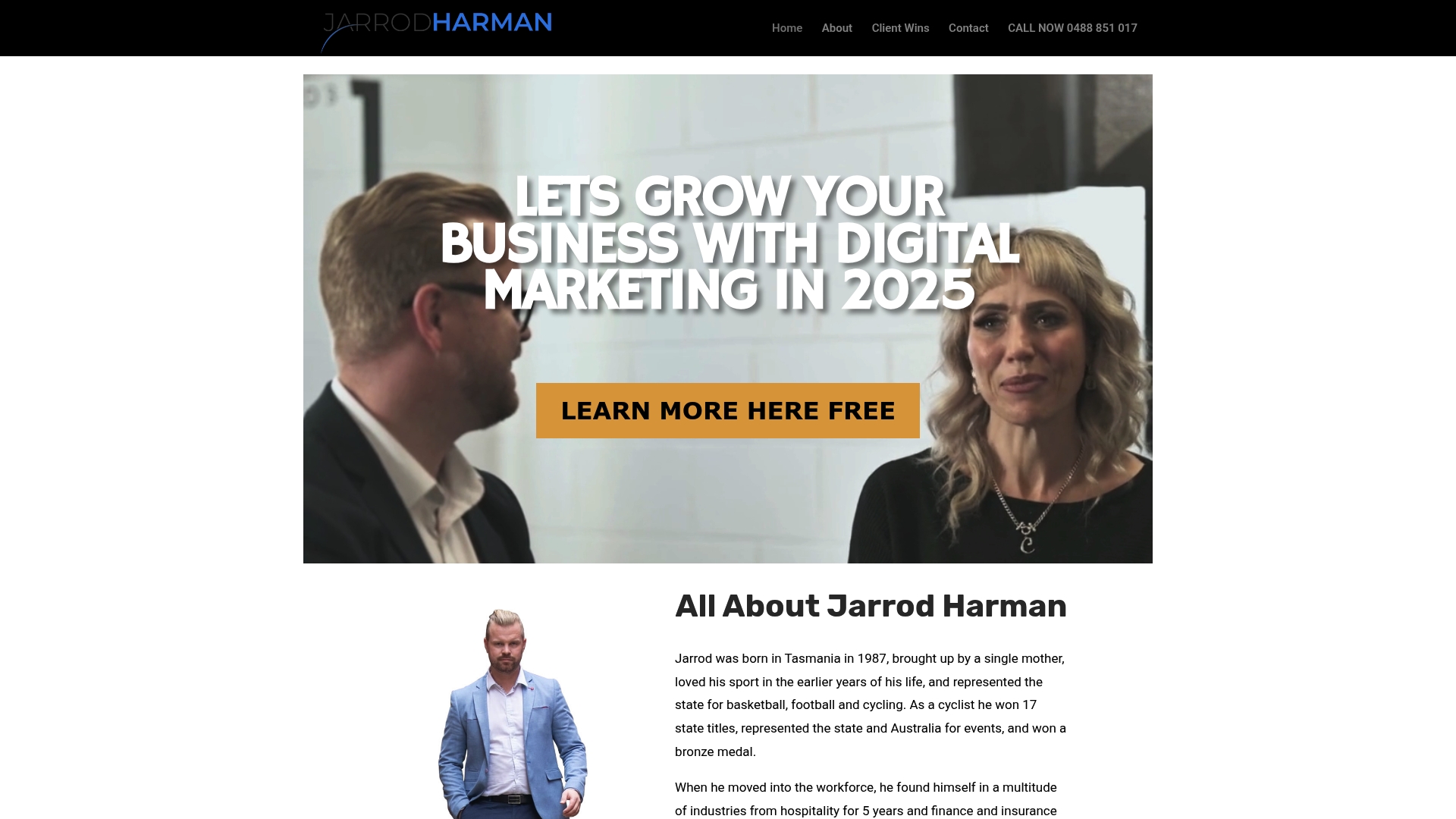Businesses that nurture leads see a whopping 50 percent more sales-ready prospects at a 33 percent lower cost, reports Forrester. Knowing exactly who your leads are and guiding them thoughtfully can make all the difference between stalled growth and a thriving sales pipeline. With the right approach, you can move potential customers steadily toward conversion by combining targeted audience segmentation, powerful automation, and truly engaging communication.
Table of Contents
- Step 1: Define Your Ideal Leads And Segment Your Audience
- Step 2: Build Automated Lead Nurturing Workflows
- Step 3: Develop Engaging Multi-Channel Content
- Step 4: Personalize Communication For Lead Engagement
- Step 5: Track Results And Optimize Your Nurturing Process
Quick Summary
| Key Point | Explanation |
|---|---|
| 1. Define and segment your audience | Identify ideal leads by analyzing demographics and pain points to create targeted personas. |
| 2. Build automated workflows | Develop intelligent workflows that guide leads through the sales process using automation tools. |
| 3. Create multi-channel content | Craft engaging content tailored for different platforms to maintain consistent messaging across channels. |
| 4. Personalize communication | Use data to enhance interactions, ensuring messages feel tailored to each individual lead. |
| 5. Track and optimize strategies | Continuously measure and refine your nurturing process based on performance metrics to improve conversions. |
Step 1: Define your ideal leads and segment your audience
The foundation of effective lead nurturing starts with understanding precisely who your potential customers are and strategically dividing them into meaningful groups. By creating detailed audience personas and segmentation strategies, you unlock the power to deliver laser targeted marketing messages that convert.
According to research from Walden University, identifying your target audience requires analyzing critical demographic factors including age, gender, income level, and cultural identification. This means going beyond generic descriptions and developing nuanced profiles of your ideal customers.
To begin defining your ideal leads, start by examining your current customer base. Look for common characteristics such as:
- Professional role or industry
- Company size and annual revenue
- Geographic location
- Specific pain points and challenges
- Purchasing behaviors and decision making patterns
The Environmental Protection Agency highlights that effective audience segmentation involves understanding behavioral patterns, cultural backgrounds, and communication preferences. This means creating segments that go deeper than surface level demographics.
Pro Tip: Use data analytics tools and customer surveys to gather rich insights about your audience segments.
As you develop these segments, consider creating 3 to 5 distinct customer personas that represent your most valuable potential leads. Each persona should include detailed information about their goals, challenges, and potential interaction points with your business.
The next step will involve developing targeted communication strategies for each of these carefully defined audience segments, ensuring your marketing efforts speak directly to their unique needs and motivations.
Step 2: Build automated lead nurturing workflows
Automated lead nurturing workflows transform how businesses engage potential customers by creating intelligent systematised communication pathways that guide prospects seamlessly through the sales journey. These strategic systems enable you to deliver personalised interactions at precisely the right moment.
According to the American Marketing Association, implementing marketing automation involves creating workflows that strategically guide leads through the sales funnel while utilising tools like CRM systems to automate tasks and personalise communication.
To build effective automated workflows, follow these key steps:
- Map out your entire customer journey from initial contact to conversion
- Identify key touchpoints and decision making stages
- Select a robust marketing automation platform compatible with your existing tech stack
- Create segmented email sequences tailored to different audience personas
- Set up triggered responses based on specific lead behaviors
Research from CodeDesign highlights how AI driven automation can streamline lead management by integrating advanced tools like ChatGPT with CRM systems to qualify leads, assign intelligent scoring, and trigger personalised follow ups that dramatically enhance conversion efficiency.
Pro Tip: Regularly review and optimize your workflows based on performance metrics and lead engagement data.
Prioritise creating dynamic workflows that adapt to individual lead interactions. This means designing communication paths that can automatically adjust based on how a potential customer responds to your initial outreach.
As you develop these automated systems, remember that the goal is not just automation but meaningful personalised engagement that feels natural and responsive to each lead’s unique journey.

Your next step will involve implementing tracking mechanisms to continuously measure and refine these automated nurturing workflows for maximum impact.
Step 3: Develop engaging multi-channel content
Creating compelling multi-channel content is the strategic approach that transforms passive leads into actively engaged potential customers. Your goal is to craft a seamless narrative that resonates across different platforms while maintaining a consistent brand voice and message.
According to research from Juno School, effective drip campaigns involve crafting content tailored to audience segments, utilizing various channels such as email and social media to maintain engagement and guide leads through the sales funnel.
To develop a robust multi-channel content strategy, consider these key elements:
- Create content that speaks directly to different audience personas
- Adapt your messaging to suit each platform unique characteristics
- Maintain a consistent brand voice and visual identity across channels
- Design content that provides genuine value at each stage of the buyer journey
- Integrate storytelling techniques that connect emotionally with your audience
Research from Data Stat Research highlights how email marketing automation enables the creation of personalized content across multiple channels, enhancing lead engagement and conversion rates.
Pro Tip: Use analytics to track content performance across different channels and continuously refine your approach.
Focus on creating content that feels native to each platform while maintaining a cohesive overall narrative. This means your LinkedIn post might look different from your Instagram content, but the core message remains consistent.
Create a social media marketing plan template can help you strategically map out your multi channel content approach, ensuring you deliver the right message to the right audience at the right time.
Remember that multi channel content is about building relationships. Your content should feel like a conversation not a broadcast aimed at educating, entertaining, and solving your leads specific problems.
Your next step involves implementing a systematic approach to content creation and distribution that keeps your leads consistently engaged and moving through your sales pipeline.
Step 4: Personalize communication for lead engagement
Personalizing communication is the critical strategy that transforms generic interactions into meaningful conversations that resonate deeply with your potential customers. Your objective is to create communication experiences that feel individually crafted for each lead.
According to research from CodeDesign, utilizing AI tools like ChatGPT allows for the generation of hyper personalized emails based on user behavior and demographics, significantly improving lead engagement.
To effectively personalize your communication strategy, implement these key approaches:
- Collect comprehensive data about your leads preferences and behaviors
- Develop detailed customer personas with specific communication preferences
- Use dynamic content that adapts to individual lead characteristics
- Track interaction history to understand each leads unique journey
- Leverage technology that enables real time personalization
Research from Digital Network highlights how CRM workflows can be configured to segment leads and tailor communication styles, ensuring timely and relevant interactions that enhance the buyer experience.
Pro Tip: Regularly update your lead data to maintain accuracy and relevance in your personalization efforts.
How to nurture leads online becomes significantly more effective when you treat each lead as a unique individual with specific needs and preferences.
Important considerations include understanding the fine line between personalization and intrusion. Your communication should feel helpful and considerate not invasive or overwhelming.
Remember that true personalization goes beyond using a leads first name. It involves understanding their specific challenges, aspirations, and providing value that feels genuinely tailored to their situation.
Your next step involves implementing sophisticated tracking and communication systems that allow for nuanced lead engagement and relationship building.
Step 5: Track results and optimize your nurturing process
Optimizing your lead nurturing process requires a systematic approach to measuring performance and continuously refining your strategies. Your goal is to transform raw data into actionable insights that drive meaningful improvements in your lead conversion efforts.
According to the American Marketing Association, evaluating the effectiveness of automated lead nurturing requires analyzing conversion rates and understanding that its impact varies across different industries and customer segments.
To effectively track and optimize your nurturing process, implement these strategic tracking methods:
- Establish clear key performance indicators for each stage of your lead journey
- Utilize advanced analytics platforms to monitor lead behavior
- Compare conversion rates across different communication channels
- Track engagement metrics beyond simple open or click rates
- Conduct regular performance audits of your nurturing workflows
Research from Physics Org indicates that automated lead nurturing enhances engagement and sales interactions, but its success depends on critical factors like sales cycle length and deal complexity.
Pro Tip: Create a baseline performance dashboard that provides real time insights into your lead nurturing effectiveness.
How to generate leads in digital marketing becomes significantly more powerful when you develop a robust tracking and optimization strategy.
Understand that optimization is an ongoing process. What works today might need adjustment tomorrow as market conditions and customer behaviors evolve. Be prepared to experiment and adapt your approach continuously.
Remember that data tells a story. Look beyond surface level metrics to understand the deeper patterns in how leads interact with your nurturing system. Each data point is an opportunity to refine your approach and improve conversion potential.
Your final step involves developing a culture of continuous improvement where tracking and optimization become integrated into your regular business processes.
Here’s a summary of essential steps and their objectives:
| Step | Main Objective | Key Actions |
|---|---|---|
| Define Leads & Segment | Identify best-fit customers | Analyse demographics Build personas Segment audience |
| Automate Workflows | Systematise lead nurturing | Map journey Set up triggers Personalise sequences |
| Multi-Channel Content | Drive engagement across platforms | Tailor content Maintain brand consistency Deliver value |
| Personalise Communication | Build meaningful connections | Use data Adapt messages Track interactions |
| Track & Optimise | Improve conversion rates | Set KPIs Monitor metrics Refine strategy |
Unlock Consistent Business Growth with Expert Lead Nurturing Support
Struggling to turn leads into loyal customers can leave your business growth feeling stuck. This article highlights the crucial steps to nurture leads effectively including defining ideal customers, automating workflows, and delivering personalised communication. But implementing these sophisticated strategies on your own can feel overwhelming when you need a proven system designed for your unique market.
At Business Warriors, we specialise in scalable sales and marketing systems tailored for service-based businesses ready to grow. Our signature Marketing Vortex Method integrates SEO, ads management, email marketing and more to deliver the consistent leads and conversions you need. If you want to move beyond generic marketing and finally see results, it’s time to take strategic control.

Take the first step towards transforming your lead nurturing into a powerful growth engine. Visit Jarrod Harman to explore how expert guidance and proven strategies can elevate your marketing campaigns. Discover how to nurture leads online with personalised engagement that converts. Ready to future-proof your sales pipeline? Check out how to generate leads in digital marketing and start building momentum today.
Frequently Asked Questions
How can I define my ideal leads for effective nurturing?
To define your ideal leads, analyze your current customer base and identify common characteristics such as professional roles, pain points, and purchasing behaviors. Start by creating 3 to 5 detailed customer personas based on these insights to guide your nurturing efforts.
What key steps should I take to build automated lead nurturing workflows?
Begin by mapping out your customer journey from initial contact to conversion, identifying key touchpoints along the way. Set up segmented email sequences and configure triggered responses based on specific lead behaviors to ensure personalized communication and timely engagement.
How do I create engaging multi-channel content for lead nurturing?
Craft content tailored to different audience personas while maintaining a consistent brand voice across platforms. Focus on delivering genuine value at each stage of the buyer journey to keep leads engaged and guide them toward conversion.
What are the best practices for personalizing communication with leads?
Personalize communication by collecting detailed data about your leads’ preferences and behaviors, and adapt your messages accordingly. Use dynamic content that changes based on individual interactions to enhance the relevance of your outreach.
How can I effectively track and optimize my lead nurturing process?
To track and optimize your lead nurturing process, establish clear key performance indicators (KPIs) for each stage and use analytics to monitor lead behavior. Regularly review engagement metrics and conduct performance audits to identify areas for improvement and refine your strategies.


